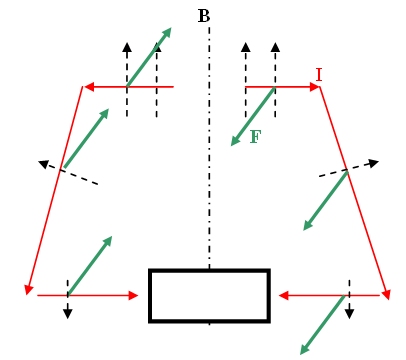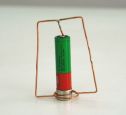
Moments of force acting
on the loop
in the field of the magnet
|
The direction of the force
acting on every part of the wire is defined by the right hand rule (thumb
indicates the current, the indice – the magnetic field direction, the middle –
the force). Alternatively, one can also use the vector product F=qv x
B. It turns out that the particular geometry of the loop assures that the
magnetic filed is approximately perpendicular to all three single segments,
assuring therefore the maximum force. As seen from the fig. 2. the force
moments acting on the two „wings” of the loop do sum up. The engine turns
around!
In order to invert the
direction of rotation one can invert the battery or the poles of the magnet. |




